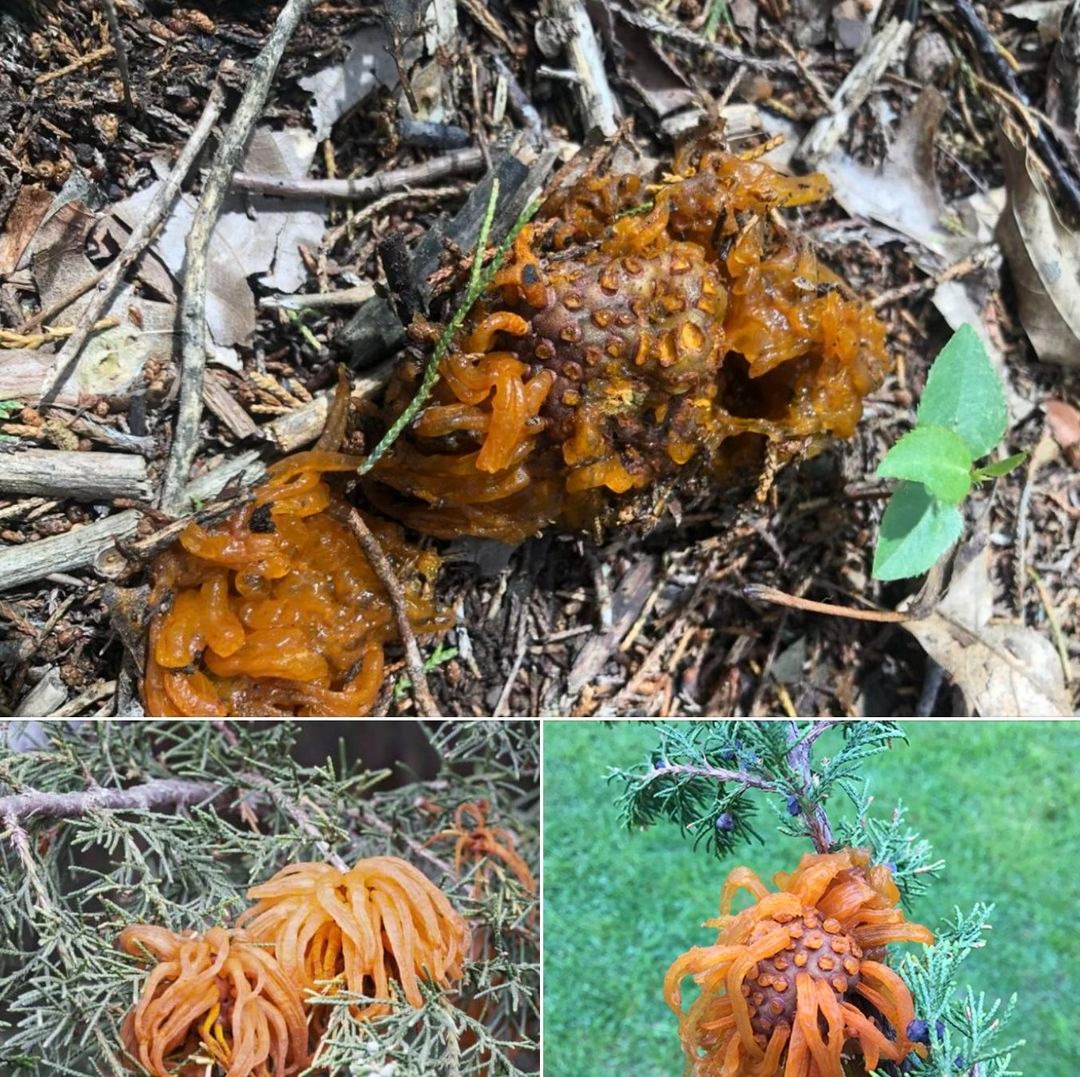Maintaining a backyard garden can be a rewarding experience, but it also comes with its fair share of challenges. Sometimes, you may come across something unusual that leaves you scratching your head. This was the case for a Reddit user in Oklahoma who recently found something odd in their trees: large, yellow jelly-like growths, which they referred to as “jelly alien nuts.” Confused and curious, they turned to the online community for answers.

The mysterious growths were quickly identified as a result of cedar-apple rust, a fungal disease that requires two host plants to complete its life cycle. Despite its name, the disease doesn’t just affect cedar trees—it also impacts junipers, as well as apples and crabapples. If you’ve noticed something similar in your backyard, understanding this condition is the first step toward managing it.
Identifying Cedar-Apple Rust
Cedar-apple rust shows different symptoms depending on the type of tree it infects. On juniper trees, the disease presents as brown galls—small, rounded growths that cling to the twigs. These galls may seem harmless at first, but once springtime hits and the weather becomes damp, they transform, growing bright orange, gelatinous horns. Though this might look alarming, the juniper host is not usually seriously affected. Only the twigs near the gall may die off, leaving the rest of the tree unscathed.
If you have apple or crabapple trees, cedar-apple rust presents differently. Shortly after these trees bloom, you may notice yellow, circular spots appearing on their leaves. As the summer progresses, these spots turn into brownish tufts of threads or cylindrical tubes that grow on the undersides of the leaves, fruits, and twigs. This can impact the tree’s aesthetic appearance but does not typically kill the tree.
Understanding the Life Cycle of Cedar-Apple Rust
Now that you can identify cedar-apple rust, you might wonder how long this disease persists. It’s important to know the timeline of the fungus’s life cycle so you can manage it effectively.
About seven months after the initial infection, galls begin to form on junipers. By the time they’re 18 months old, these galls have turned into jelly-like lumps. The following spring, telial horns—elongated, spore-producing structures—begin to emerge from the galls. These horns extend and turn bright orange during wet spring weather. They eventually release spores that are carried by the wind to infect apple or crabapple trees. Once the spores are released, the horns collapse, dry out, and fall off, but the galls remain attached to the tree for at least another year before they die.
The most noticeable stage of infection occurs in the spring when the galls become covered with orange, gelatinous masses, making the disease easy to spot. However, even though the galls may look concerning, they don’t cause severe harm to junipers and only affect the appearance of the plant.
Managing Cedar-Apple Rust
While cedar-apple rust might look strange or even alarming, the good news is that it doesn’t pose a significant threat to your trees. The fungus doesn’t typically kill its host, though it can damage the appearance of the plant. Luckily, there are a few ways to manage and treat this fungal infection.
One option is to prune away infected branches on both juniper and apple trees, helping to stop the spread of the disease. For a more preventative approach, you can plant apple varieties that are resistant to cedar-apple rust, reducing the likelihood of infection. Another solution is to use fungicides on susceptible trees, particularly in the spring when the galls are actively producing spores.
Though cedar-apple rust may alter the appearance of your trees, it’s not something that should cause panic. Understanding how to identify the disease and manage it appropriately will keep your garden in good health without needing drastic measures.
Conclusion
In conclusion, cedar-apple rust can be an unusual sight in your backyard, but it isn’t a major threat to your trees. By learning to identify the symptoms and understanding the life cycle of the fungus, you can take the necessary steps to manage it. Whether it’s by pruning infected areas, planting resistant tree varieties, or applying fungicides, you have options to keep your garden looking its best. Remember, cedar-apple rust primarily affects the appearance of your trees and doesn’t usually cause lasting damage.
Share this information with fellow gardeners to help them recognize and understand cedar-apple rust, so everyone can maintain a healthy, vibrant garden. Happy gardening!





